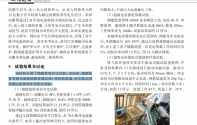Old image.
And it's not "alleged". It is well confirmed.
When did it start making test flights?
Also used alleged in case of a photo not being authentic, I’m well aware the twin-seater version is real.
Old image.
And it's not "alleged". It is well confirmed.
When did it start making test flights?
Also used alleged in case of a photo not being authentic, I’m well aware the twin-seater version is real.
When did it start making test flights?
Also used alleged in case of a photo not being authentic, I’m well aware the twin-seater version is real.
One of the hypothesized roles for the twin seater is as a commander of drones and less advanced fighters. If the J-20S is always flying with a group of much cheaper and less stealthy planes, then there is little benefit to making the J-20S as stealthy as possible when it is already so much more stealthy than the other planes that it will be flying with.
being a command unit doesn’t necessarily mean it has to mingle with other units. As a matter of fact I don’t think the command unit should be anywhere near the drones, much safer and more effective that way.


This question may belong in the UAV thread but the images brings this to mind. Does the PLA intend to have an EW (perhaps dedicated) type UAV in the near future, or do they already possess one that'll be able to conduct the concept as described?@Scchwerter_ is correct. Manned command platform will stay some distance behind the UAVs (1st image). In fact, manned platform and UAVs won't even share the same flight profile (2nd image). The illustrations are from Chinese military literature on manned-unmanned cooperative engagement.


Does China has similar projects underway as this one?
I do envision that at the start of any conflict, fighters, strike fighters, bombers and UCAVs fitted these sort of small-sized portable airborne laser weapon would consist of and/or being part of the first waves of strike missions against the enemy side.
The laser weapons could either be mounted on airframes of all frontline combat warplanes, or they could be mounted on selected warplane airframes only with sufficient power generation for the weapon to operate.
Since I believe we can all agree that the first few waves of any attack against well-prepared enemies would definitely encounter significant amount of resistance, therefore I think that such laser weapons would increase the chances of survival of aircrew and airframes during the phase of war when the most amount of missiles are lobbed from the enemy side that are aiming to thwart and defeat the offensive initiatives of our/friendly side.
This means that the lasers can be used to:
1. Shoot down oncoming missiles towards the warplane itself (self-defense);
2. Shoot down oncoming missiles towards warplane(s) of squadron-mates (buddy-defense); and
3. Shoot down oncoming missiles towards other, more vulnerable warplanes i.e. cargo tranporters, refueling tankers, AWACS, EW aircrafts (team-defense).
Since the J-20 is the newest and most advanced fighter model that China operates right now, so I decided that it is more suitable to post it here. Although realistically speaking, such laser weapons can also be fitted onboard just any other frontline combat and non-frontline combat warplanes that are capable of operating these laser weapons.
Most likely (there's the silent hunter, which uses laser to shoot down drones, so laser development is a thing), but don't expect laser weapons to be able to shoot down incoming missiles until maybe around the late 2020s.Does China has similar projects underway as this one?
I do envision that at the start of any conflict, fighters, strike fighters, bombers and UCAVs fitted these sort of small-sized portable airborne laser weapon would consist of and/or being part of the first waves of strike missions against the enemy side.
The laser weapons could either be mounted on airframes of all frontline combat warplanes, or they could be mounted on selected warplane airframes only with sufficient power generation for the weapon to operate.
Since I believe we can all agree that the first few waves of any attack against well-prepared enemies would definitely encounter significant amount of resistance, therefore I think that such laser weapons would increase the chances of survival of aircrew and airframes during the phase of war when the most amount of missiles are lobbed from the enemy side that are aiming to thwart and defeat the offensive initiatives of our/friendly side.
This means that the lasers can be used to:
1. Shoot down oncoming missiles towards the warplane itself (self-defense);
2. Shoot down oncoming missiles towards warplane(s) of squadron-mates (buddy-defense); and
3. Shoot down oncoming missiles towards other, more vulnerable warplanes i.e. cargo tranporters, refueling tankers, AWACS, EW aircrafts (team-defense).
Since the J-20 is the newest and most advanced fighter model that China operates right now, so I decided that it is more suitable to post it here. Although realistically speaking, such laser weapons can also be fitted onboard just any other frontline combat and non-frontline combat warplanes that are capable of operating these laser weapons.
Most likely (there's the silent hunter, which uses laser to shoot down drones, so laser development is a thing), but don't expect laser weapons to be able to shoot down incoming missiles until maybe around the late 2020s.
And even then, might only be able to take down 1 missile if more than 1 approaches.



